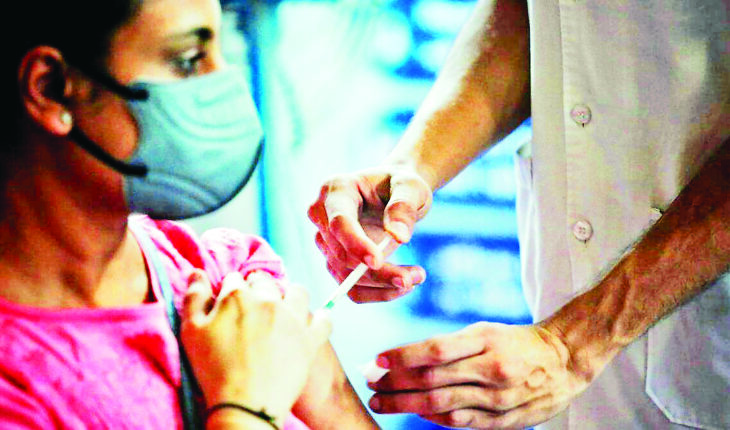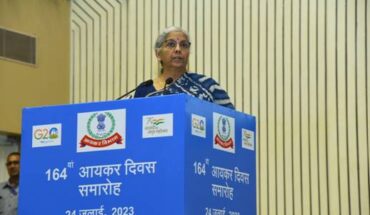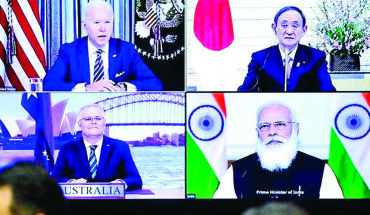Navkaran Singh Sandhu explains how no country is safe until every country is safe Although It’s easier said than done, it still is our best bet. When Coronavirus rattled the world back in January 2020, the whole world went into panic mode. By the end of the year, as we had millions of cases and watched thousands succumb to the virus, we also witnessed the signing of numerous bilateral deals between various governments and vaccine manufacturing companies to procure their share of the vaccine shots.
This is exactly where the problem began. While the rich countries with their billions of dollars ordered and procured millions of doses in advance, the poorer nations were left to wait in line. According to experts, by the beginning of 2021, the developed G7 countries had already procured vaccine shots for every 1 of 3 of their citizens which translates to nearly 33% of their population whereas the poorer nations could barely manage to acquire merely 1 vaccine shot for every 100 of their citizens at a staggering rate of only 1% of their population. Yeah, you read that right. And this right here, is Vaccine Inequality.
How the rich failed the poor
The so-called “first-world countries”, the developed and the civilised ones have shamelessly taken to hoarding and grabbing the maximum they can. So much so that some of the African countries won’t get any vaccine up until 2024! The differences are glaring and the numbers are astonishing. While the USA has vaccinated 44% of its population already by May 2021, Kenya has been able to provide for only 1.6% of its population. While Canada has outrageously ordered vaccines that can provide for more than 10 times of its population, more than 30 poor world countries haven’t been able to get even one shot as of now! By September ,2021, Israel will have all its citizens vaccinated and conversely, Nigeria would struggle even to give its frontline workers 2 shots each. According to Tedros Ghebreyesus, the director-general of the World Health Organization (WHO), more than 39 million doses of Covid-19 vaccines had been administered in at least 49 higher-income countries, while a meagre 25 doses had been administered in one of the lowest-income countries.
If all this wasn’t enough, the developed countries have also refused to let go of patents of the vaccines for the developing or low-income countries to make for their own. It shouldn’t come as a surprise that when the whole world was locked down and most of the small and medium businesses faced a crunch, the big pharmaceutical companies raked in huge profits and look at all-time high stock prices.
The disgraceful and deplorable “vaccine grab” by the rich countries, controlled by capitalists and rich pharmas is only helping the pandemic last longer. And the longer it will take to vaccinate enough global population, the severer the virus will become as is apparent from what’s happening in India.
Where did India go wrong?
From getting vaccines from other countries to producing its own, India did fairly well. In fact, India administers the highest number of vaccines in a single day. But due to its huge population, it’s still not enough! By May 2021, India has been able to fully vaccinate only 1.8% of its population. Also, the shortfall problem is now coming to the fore as more and more people become eligible to get the shot but not everyone is getting it.
And this brings us to the Vaccine Inequality within the country: between the haves and the have nots. While private hospitals are providing vaccine shots (plus a nice counselling session on a fancy couch) for as much as Rs 1200, the government centres where this vaccine is free, run out of these shots every other day. The poor and lower-middle-class line up outside government vaccination centres every day but return empty-handed even after waiting for hours, mostly standing in long queues in 35*C. The dirty Indian politics doesn’t help either and the states ruled by the opposition parties fare ever worse here. The step motherly treatment is evident from the fact that Punjab, Rajasthan, Maharashtra have all signalled their inability to vaccinate the 18-45 age group because of the severe shortage in the number of available doses.
The way forward
It’s a shame how these rich countries have failed the poor ones. How they’ve refused to do anything more than what keeps their “image or reputation”.
The developed world needs to understand that the virus, if left to spread and mutate even in the remotest corner of the world; will surely knock on their doors sooner than later. Unlike these countries, the virus will not differentiate between the rich and the poor with its severity and its mutations. They also need to apprehend that their selfish modus operandi of “Every country for its own” will not work in case of a Global Pandemic.
The COVAX initiative of WHO, which is a desperate but laudable attempt for equitable distribution of the vaccine, has put up a mechanism to get these vaccines to the countries in the low-income bracket. The initiative has been joined by more than 140 countries including the developed ones and has started disbursing the vaccines to the needy. The mechanism loosely aims to be the “Robinhood”: take from the rich and give to the poor. But for it to make a real impact, the first world countries need to throw some major weight behind the COVAX with more than just words or money. The Biden administration of the USA with its proposal to back the waivers on the vaccines offers some hope for people of “the third world” countries. Also, the World Trade Organisation (WTO) needs to step up and waiver any patents that can hurt the cause.
The only solution to a pandemic is either to eradicate the virus or vaccinate enough people to create a Herd. It’s high time these countries start acting on the lessons of “Humanity” they so often preach.
The only way we can have some hope that the inevitable third wave is not as deadly as the current one is to get enough people vaccinated. And we need to ACT NOW !
This is exactly where the problem began. While the rich countries with their billions of dollars ordered and procured millions of doses in advance, the poorer nations were left to wait in line. According to experts, by the beginning of 2021, the developed G7 countries had already procured vaccine shots for every 1 of 3 of their citizens which translates to nearly 33% of their population whereas the poorer nations could barely manage to acquire merely 1 vaccine shot for every 100 of their citizens at a staggering rate of only 1% of their population. Yeah, you read that right. And this right here, is Vaccine Inequality.
How the rich failed the poor
The so-called “first-world countries”, the developed and the civilised ones have shamelessly taken to hoarding and grabbing the maximum they can. So much so that some of the African countries won’t get any vaccine up until 2024! The differences are glaring and the numbers are astonishing. While the USA has vaccinated 44% of its population already by May 2021, Kenya has been able to provide for only 1.6% of its population. While Canada has outrageously ordered vaccines that can provide for more than 10 times of its population, more than 30 poor world countries haven’t been able to get even one shot as of now! By September ,2021, Israel will have all its citizens vaccinated and conversely, Nigeria would struggle even to give its frontline workers 2 shots each. According to Tedros Ghebreyesus, the director-general of the World Health Organization (WHO), more than 39 million doses of Covid-19 vaccines had been administered in at least 49 higher-income countries, while a meagre 25 doses had been administered in one of the lowest-income countries.
If all this wasn’t enough, the developed countries have also refused to let go of patents of the vaccines for the developing or low-income countries to make for their own. It shouldn’t come as a surprise that when the whole world was locked down and most of the small and medium businesses faced a crunch, the big pharmaceutical companies raked in huge profits and look at all-time high stock prices.
The disgraceful and deplorable “vaccine grab” by the rich countries, controlled by capitalists and rich pharmas is only helping the pandemic last longer. And the longer it will take to vaccinate enough global population, the severer the virus will become as is apparent from what’s happening in India.
Where did India go wrong?
From getting vaccines from other countries to producing its own, India did fairly well. In fact, India administers the highest number of vaccines in a single day. But due to its huge population, it’s still not enough! By May 2021, India has been able to fully vaccinate only 1.8% of its population. Also, the shortfall problem is now coming to the fore as more and more people become eligible to get the shot but not everyone is getting it.
And this brings us to the Vaccine Inequality within the country: between the haves and the have nots. While private hospitals are providing vaccine shots (plus a nice counselling session on a fancy couch) for as much as Rs 1200, the government centres where this vaccine is free, run out of these shots every other day. The poor and lower-middle-class line up outside government vaccination centres every day but return empty-handed even after waiting for hours, mostly standing in long queues in 35*C. The dirty Indian politics doesn’t help either and the states ruled by the opposition parties fare ever worse here. The step motherly treatment is evident from the fact that Punjab, Rajasthan, Maharashtra have all signalled their inability to vaccinate the 18-45 age group because of the severe shortage in the number of available doses.
The way forward
It’s a shame how these rich countries have failed the poor ones. How they’ve refused to do anything more than what keeps their “image or reputation”.
The developed world needs to understand that the virus, if left to spread and mutate even in the remotest corner of the world; will surely knock on their doors sooner than later. Unlike these countries, the virus will not differentiate between the rich and the poor with its severity and its mutations. They also need to apprehend that their selfish modus operandi of “Every country for its own” will not work in case of a Global Pandemic.
The COVAX initiative of WHO, which is a desperate but laudable attempt for equitable distribution of the vaccine, has put up a mechanism to get these vaccines to the countries in the low-income bracket. The initiative has been joined by more than 140 countries including the developed ones and has started disbursing the vaccines to the needy. The mechanism loosely aims to be the “Robinhood”: take from the rich and give to the poor. But for it to make a real impact, the first world countries need to throw some major weight behind the COVAX with more than just words or money. The Biden administration of the USA with its proposal to back the waivers on the vaccines offers some hope for people of “the third world” countries. Also, the World Trade Organisation (WTO) needs to step up and waiver any patents that can hurt the cause.
The only solution to a pandemic is either to eradicate the virus or vaccinate enough people to create a Herd. It’s high time these countries start acting on the lessons of “Humanity” they so often preach.
The only way we can have some hope that the inevitable third wave is not as deadly as the current one is to get enough people vaccinated. And we need to ACT NOW !
Views are personal






